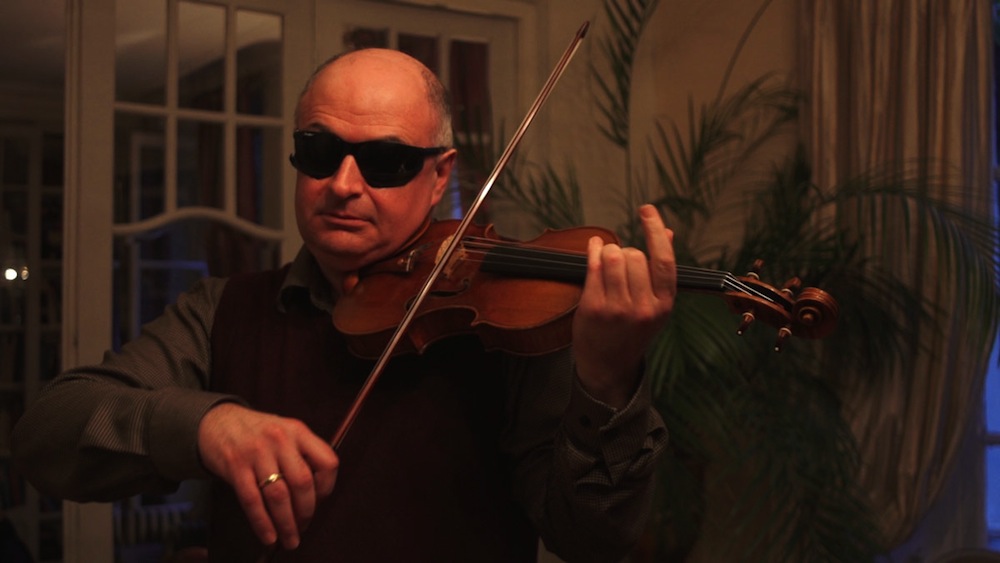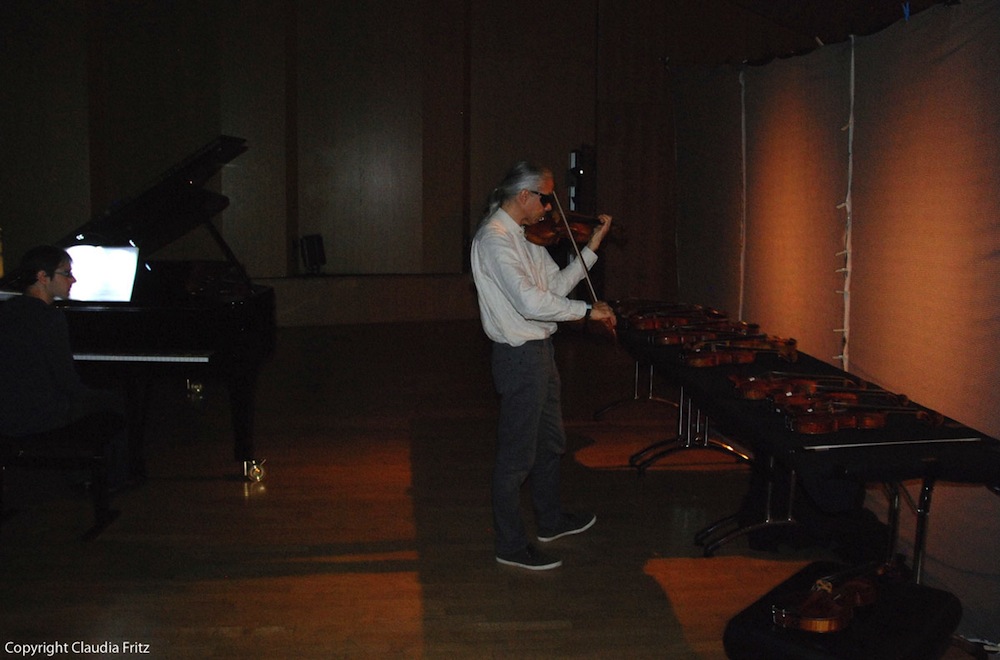Legendary Stradivarius Loses to New Violins in Blind Tests

Among violinists, the instruments built in the 1600s and 1700s by the Stradivari and Guarneri families are legendary. But a new study suggests the reputation of these old violins owes more to myth than truth.
In actuality, expert soloists pick new violins over antiques in blind tests, the research finds. What's more, the soloists performed no better than chance at guessing whether a given violin is newly manufactured or more than a century old.
"This implies that whatever it is they are looking for in an instrument, it's not related to age, or for that matter, country of origin," said study researcher Joseph Curtin, who makes violins in Ann Arbor, Mich. "That is a very surprising conclusion." [In Images: Recreating a Legendary Stradivarius Violin]
Music history
The finding shocks music aficionados, because of the mythologies built up around the Italian violin makers of the 17th and 18th centuries, particularly the Stradivari and Guarneri families. Along with violins made by other Italian masters in this era, Stradivarius and Guarneri instruments have gained almost mythical status, with musicians insisting these instruments have a quality that cannot be reproduced.
Researchers have gone as far as testing the varnish on these antique instruments, looking for the secrets to their amazing resonance. These tests have also subjected one of the 650 or so remaining Stradivarius violins to computed tomography (CT) scanning, the same kind of medical technology used to image broken ankles. The goal was to understand how the violins were constructed in order to make modern reproductions.
All of this effort may, however, be somewhat misguided. In 2010, a blind test of three new violins alongside two crafted by Stradivari and one by Guarneri found that experienced violinists picked a new instrument as their favorite most often. And the musicians couldn't tell whether they were playing an antique instrument or a new one.
Sign up for the Live Science daily newsletter now
Get the world’s most fascinating discoveries delivered straight to your inbox.
Those results shocked musicians and violin makers alike.
"As a violin maker, like most people in the violin world, I grew up absolutely believing there was a difference between an old sound and a new sound, and most violinists could readily distinguish it," Curtin told Live Science. "I thought I could, until I put on some goggles and was really forced to listen with my ears, rather than my preconceptions."
Testing the masters
The 2010 study came under criticism, however, because of the small number of violins tested and because the test took place in a hotel room rather than a concert hall. (One critic compared it to test driving a Ferrari in a parking lot.)

To address those criticisms, Curtin and his colleagues conducted a new version of the experiment in Paris. This time, they had six old and six new violins, doubling the sample size. They asked 10 renowned soloists to test the violins, first in a home practice studio and then in a 300-seat concert hall. The lights were dimmed, and the soloists wore modified welder's glasses that left them virtually blind and unable to identify the instrument they were playing. The new violins were also made in an antiqued style, with edges deliberately worn to obscure the instruments' ages.
The soloists had 50 minutes in the practice studio to try all 12 violins. After ranking the instruments, the musicians then had 12 minutes with just three violins: one their own, one their favorite of the 12 and one "alternative favorite." If their favorite of the 12 was an old violin, the alternative favorite would be the highest-ranked new violin, and vice versa.
The concert hall tests were similar, except the soloists got 45 minutes with the instruments. They were asked to rate each for loudness, playability, tone quality, clarity and estimated projection (how well they thought the sound traveled to the audience). The musicians also gave an overall rating for each violin and guessed whether it was new or old.
New vs. old
The results confirmed the findings of the 2010 study. One new instrument in particular was the most-frequently preferred, ranking No. 1 for four testers and No. 2 for four more. (Makers and owners provided the new and old instruments under the condition that the donors all remain anonymous.) The second-most-popular instrument was also new, with a Stradivarius from the maker's "golden period" coming in third. Six testers picked a new instrument as their favorite, and four chose an old one, while new violins appeared four times as often as old violins in the soloists' "top four" lists.
On average, the older violins ranked lower in all five categories of the ratings, though new and old violins came out equivalent in the "overall quality" category. Notably, the soloists couldn't tell an old violin from a new one: Their guesses were no more accurate than the flip of a coin.
The researchers reported their findings today (April 7) in the journal Proceedings of the National Academy of Sciences.
"The idea that you can't make a better sound than a Strad has been a pervasive one, and it doesn't really rest on anything except people saying it," Curtin said. The findings, he added, aren't intended to knock the Italian masters. They were geniuses, Curtin said. But there's no reason to think that today's craftsmen can't reach Stradivari's or Guarneri's heights. [Creative Genius: The World's Greatest Minds]
"The fact is that violin making has improved incredibly in the last 30 years. It's been just an absolute renaissance of the craft," Curtin said.
To his mind, the finding that modern violins stack up against and even outperform the violins of yore is a hopeful result. The team has more data on how the violins sound to listeners and the features that players look for when choosing an instrument, which will be published in future papers, Curtin said.
"I love old Italian instruments. I've spent 30 years of my life trying to copy them in various ways," he said. "But at a certain point, your job as a maker is to make your next violin better than your last one. I don't see any particular limits to doing that."
Follow Stephanie Pappas on Twitter and Google+. Follow us @livescience, Facebook & Google+. Original article on Live Science.

Stephanie Pappas is a contributing writer for Live Science, covering topics ranging from geoscience to archaeology to the human brain and behavior. She was previously a senior writer for Live Science but is now a freelancer based in Denver, Colorado, and regularly contributes to Scientific American and The Monitor, the monthly magazine of the American Psychological Association. Stephanie received a bachelor's degree in psychology from the University of South Carolina and a graduate certificate in science communication from the University of California, Santa Cruz.









